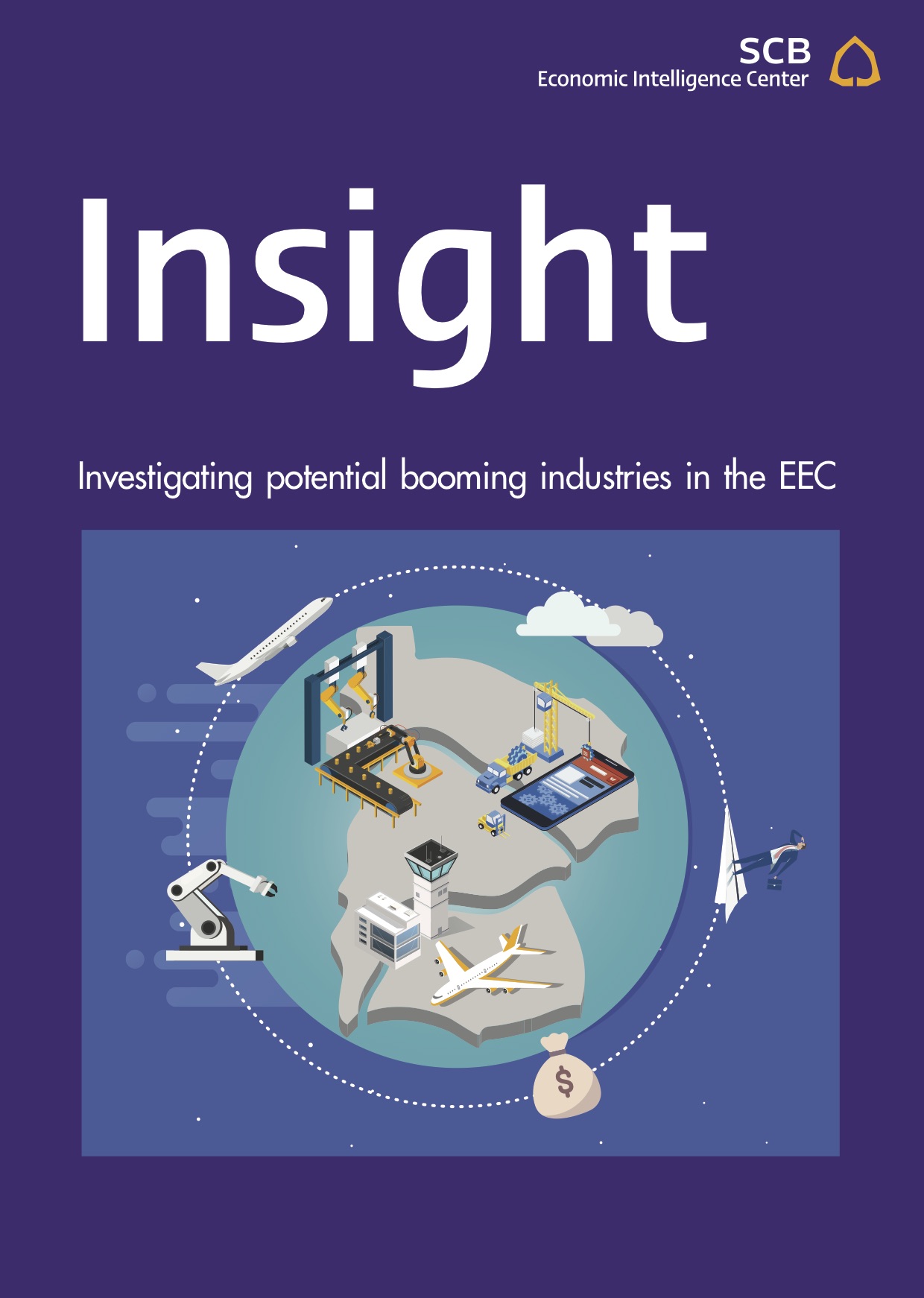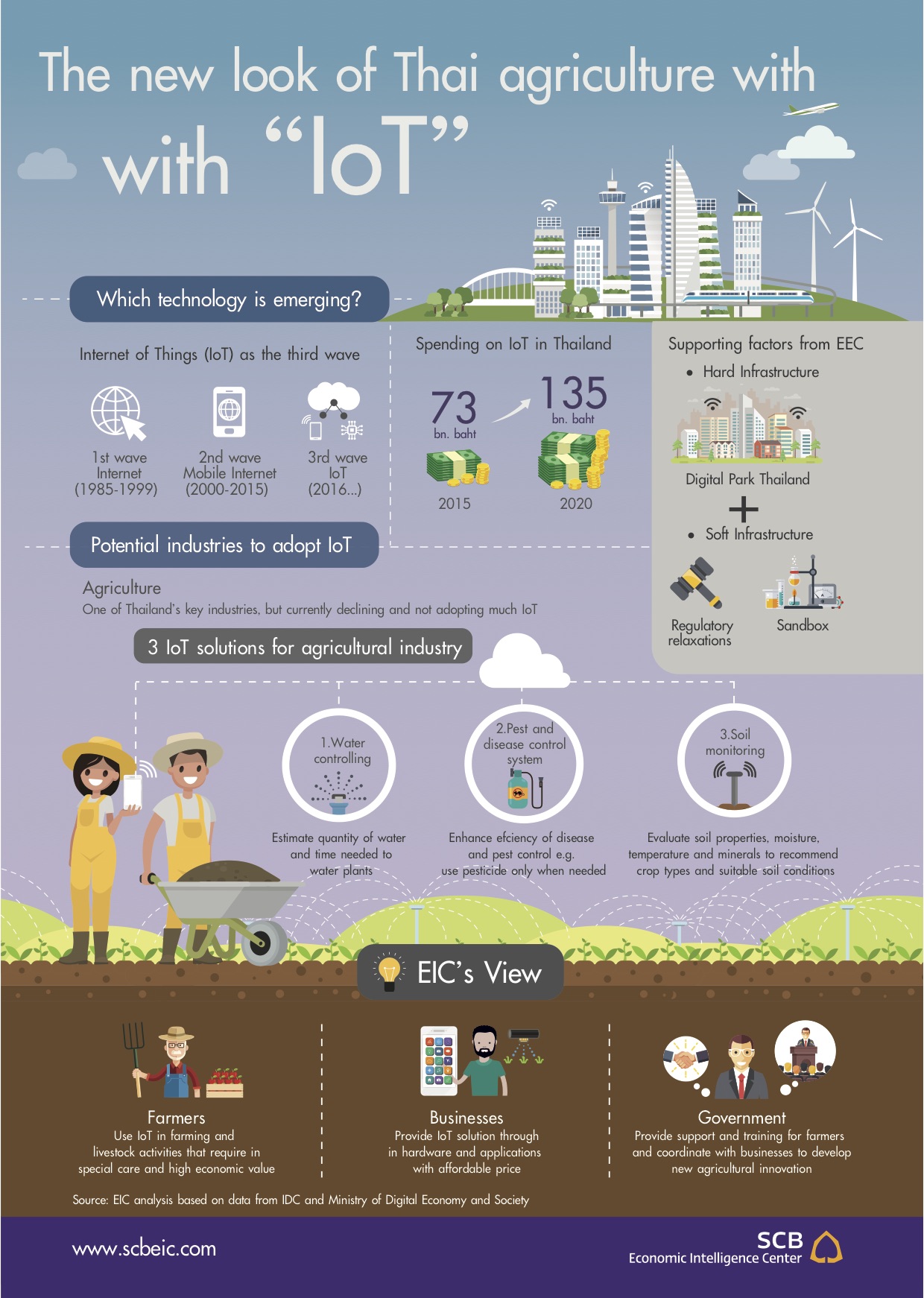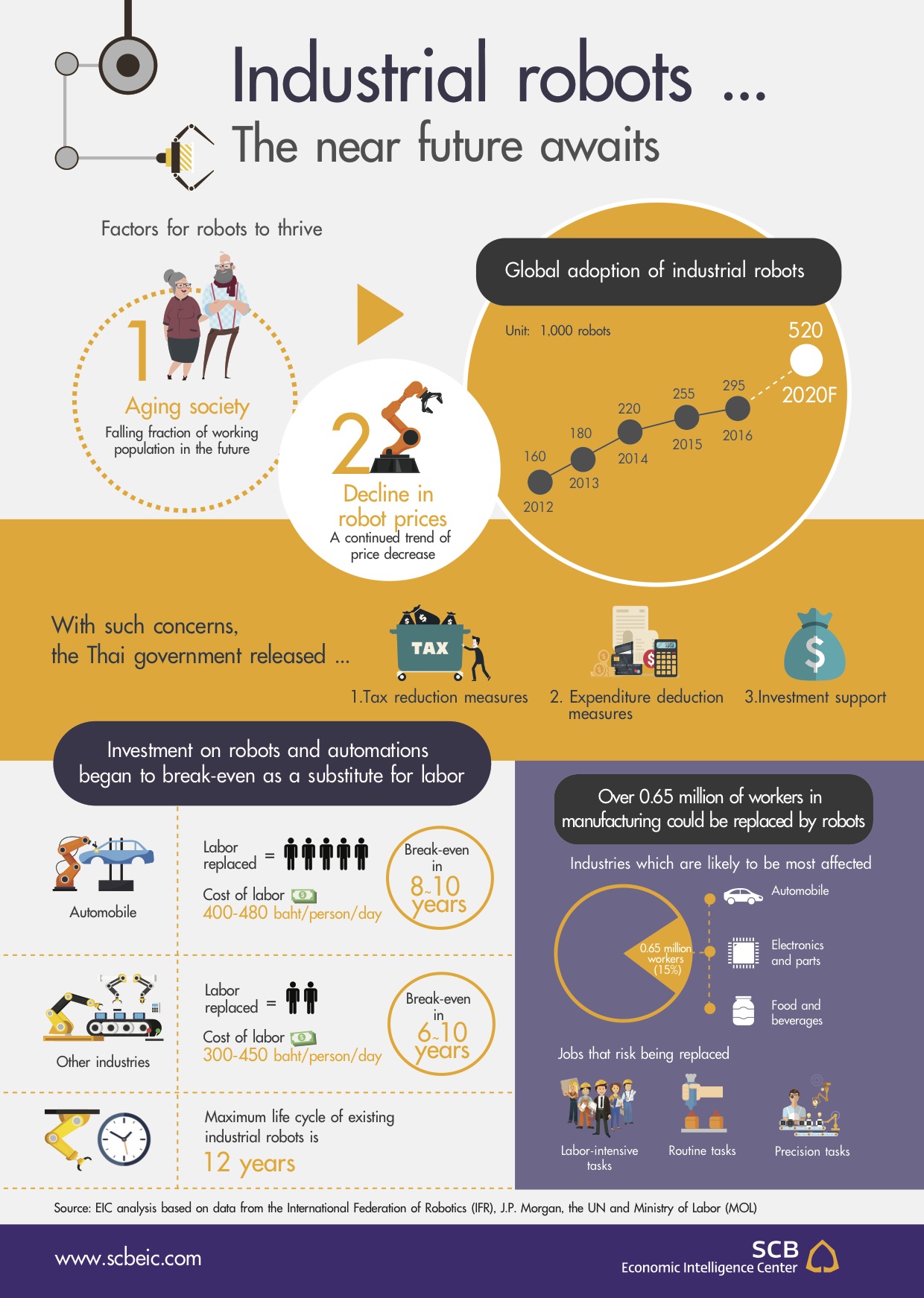Investigating potential booming industries in the EEC

Contents
- Executive Summary
- Chapter 1: EEC - the landmark project to kickoff thai investment
- Chapter 2: Aviation industry- with great opportunity comes great challenges
- Chapter 3: Digital industry - with great opportunity comes great understandings
- Chapter 4: Robotics and automation system industries - with great opportunity comes great risks
- Epilogue
The Eastern Economic Corridor (EEC) is an important government initiative aiming to attract investments into 10
targeted industries to help drive the economy. The initiative sets out roles and duties of the government, as well
as a framework for development in 3 pilot provinces including Rayong, Chonburi, and Chachoengsao, which are
currently major manufacturing bases of Thailand. The EEC is expected to attract a new wave of investments into
10 targeted industries, comprising 5 First S-curve industries (those with existing investments and operations) and 5
New S-curve industries (future industries leading toward creating new knowledge base for country’s development).
In addition to the EEC Act which is a development policy framework, the government also supports both hard and soft infrastructure. Most of hard infrastructure development projects are transport projects covering all modes
of transport and shipping -such as via rail, road, water, and air- and energy and public utilities infrastructure
projects. The latter includes development of supply and distribution system of electricity, water storage and
distribution system for consumption, environmental development for tourism and public health. In terms of soft
infrastructure, support measures include tax benefits (both corporate and income taxes), exemptions of import
duties on machinery and raw materials used for production of export products, as well as funding and facilitation
for businesses investing in the EEC.
EIC sees strong potential for 3 industries of the future in the EEC during the initial stage including digital, aviation and logistics, and robotics and automation, taking into account capabilities and skills of labor, economic impact,
and types of related industries.
The Maintenance, Repair, and Overhaul (MRO) tailored for narrow-body aircrafts will open doors for Thai businesses into aircraft manufacturing industry in the future. The narrow-body aircrafts used by low-cost carriers account
for over 70% of all aircrafts flying in and out of Thailand’s airports and are expected to grow by over 1.5 times
in the Asia-Pacific region. Moreover, development of the U-Tapao International Airport to cater for rising tourism
will be important driver for Thai businesses in aircraft maintenance and manufacturing of main parts (tier 2) and
secondary parts (tier 3) of the aircrafts.Currently, Thailand’s exports of aircraft parts are valued at over 50 billion
baht per year. These comprise of 60% of exports of aircrafts parts, 30% exports of electrical wire systems, and
the rest are engine and tires exports.

Digital infrastructure can potentially attract investment in the Internet of Things (IoT) which will offer opportunity for IoT solution development in various industries. Today, Thailand’s expenditure on IoT are still concentrated
in manufacturing industry and logistics, Meanwhile, agricultural sector has only limited use of such technology
as suggested by only 0.1% usage of embedded software which is a technology that enables communications
among devices, compared to as much as 76% in manufacturing. Thus, EIC believes that applications of IoT in
agriculture for water control, disease and pest control systems, and soil monitoring can help raise production
per rai by 30-50% and if used in economic crops, such as in rice farms, production per rai will increase to the
global average production of 480 kilograms per rai.

Value on investment in robotics and automation at present and a move toward aging society are opportunities for
Thai businesses to set foot into the System Integrator (SI) businesses. Considering capabilities of robots to replace
human labor and costs of investment, EIC found that adoption of robotics and automation will likely breakeven
within 6-10 years. Meanwhile, current industrial robots, which last approximately 12 years, will create opportunity
for Thai businesses to step into SI businesses by providing advisory and design services, and seek automation
system from manufacturers of robots and software developers to be installed for end-users as requested. In the
future, around 650,000 workers may be replaced if such systems are to be fully adopted. However, creation of
related job is likely to be taking place.
In addition to policy and readiness in transportation and public utilities infrastructure, the government should
also strive to build investor confidence, develop appropriate skills for workers, and be pro-active about social
and environmental impact. Investor relations cannot be overlooked, starting from communications on the permit
process to investment approval and operations, as well as the provision of relevant economic, physical and
social data. The government should also support the development of skilled workers, both in terms of technical
know-how and communication skills as appropriate to the emerging industries in the future. Last but not least,
measures to prevent and remedy environmental damages and support health and public welfare of those living in
the EEC will also be crucial for sustainable development. Eastern Economic Corridor as an investment attraction
initiative is bound to create significant social and economic impact. Public sector is advised not only to efficiently
pursue policy to attract investment in an appropriate and accurate manner, but also to consider social policy
that responds to the improved growth outlook of the economy. On the other hand, private sector is encouraged
to formulate their business strategies accordingly.